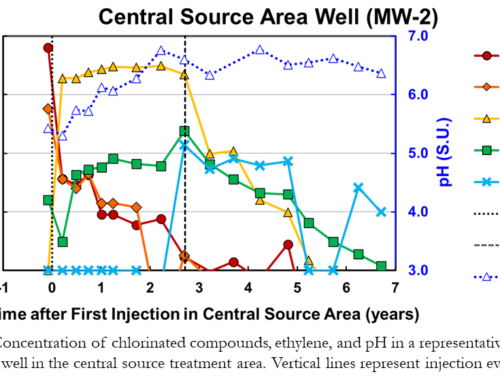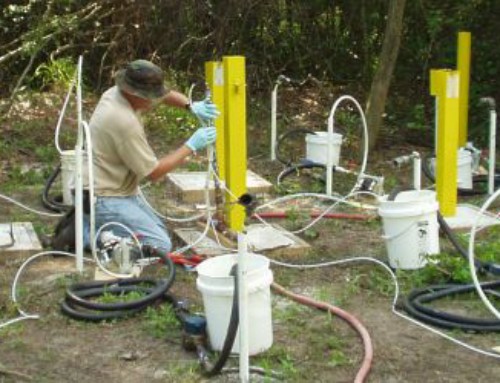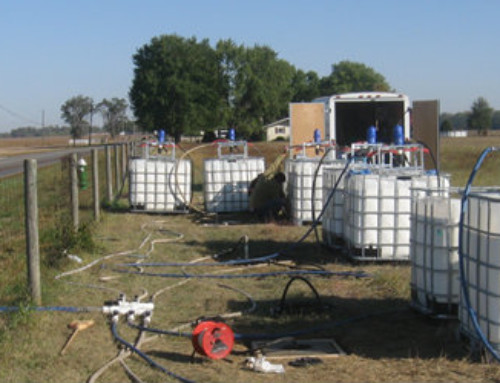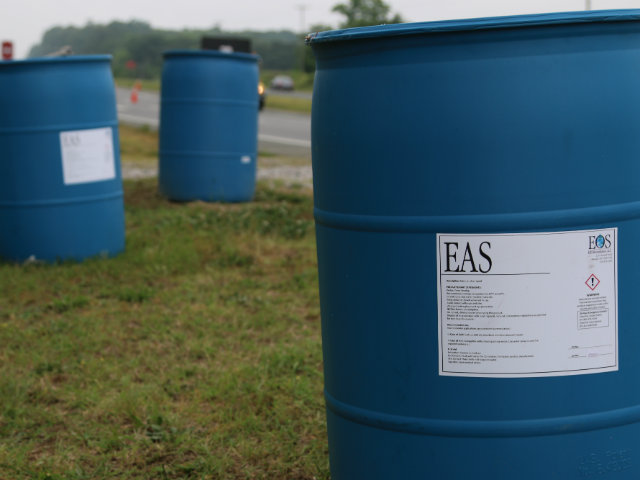
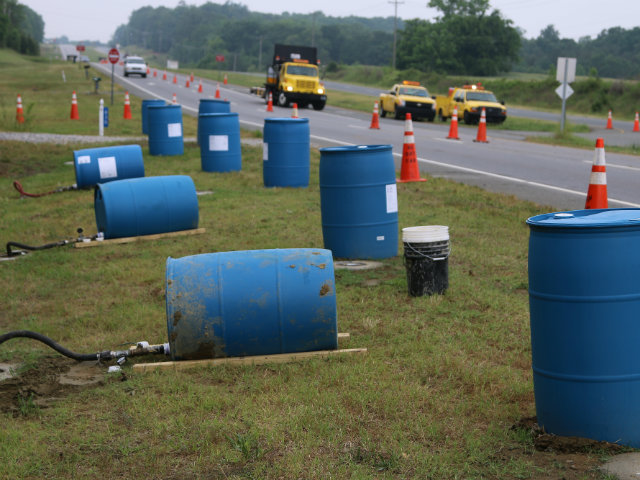
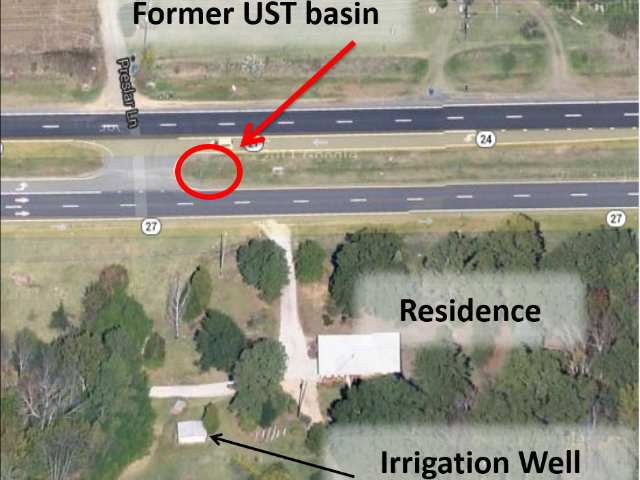
Sulfate-Enhanced Bioremediation
This case study describes using sulfate-enhanced bioremediation to stimulate anaerobic degradation of hydrocarbons in groundwater under sulfate-limiting conditions
PROBLEM
A former gas station in North Carolina contaminated groundwater with BTEX from a UST basin. The site is now in the median of a busy four-lane highway. Residents within 250 feet of the site use an irrigation well, prompting the need to conduct proactive remedial action. Site conditions of sand and clay above partially weathered bedrock and depleted sulfate concentrations within the plume created a challenge for remediation methodologies such as in situ chemical oxidation (ISCO) and soil vapor extraction (SVE)/air sparging (AS).
PROJECT OBJECTIVES
- Make use of prevailing aquifer conditions
- Achieve easy field application with minimum O&M
- Stimulate BTEX degradation with sulfate addition
METHODOLOGY
Pilot Test
- Inject a single drum of EAS® at one permanent injection point (PIW-1)
- Verify addition of sulfate would stimulate BTEX degradation
Full Scale Application
- Twenty one injection wells
- One drum of EAS® per well
- Gravity feed with no dilution or chase water
- Four post-injection monitoring events at 1, 3, 6 and 10 month intervals
RESULTS
Pilot study demonstrated that the addition of sulfate as an electron acceptor would stimulate bacteria in the area of impact. BTEX decreased 80% in PIW-1 within 6 months of injection, causing approval of full scale applicaiton
Full scale injection reduced BTEX concentrations by an order of magnitude. Benzene concentrations reduced by an average of 69% between MW-1, MW-4 and MW-13.

